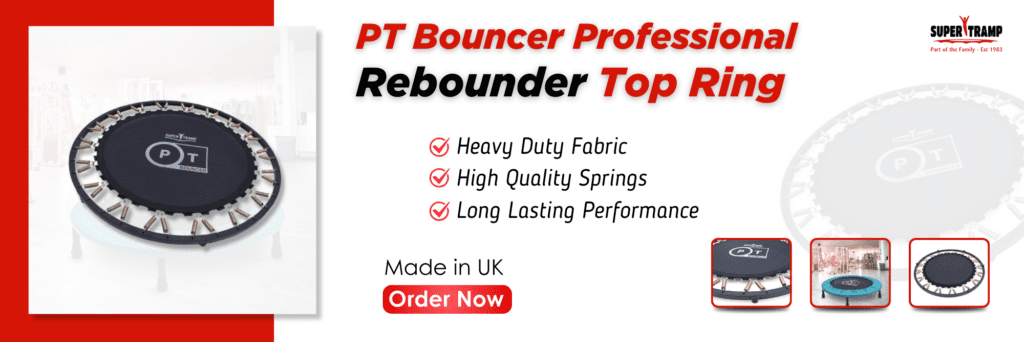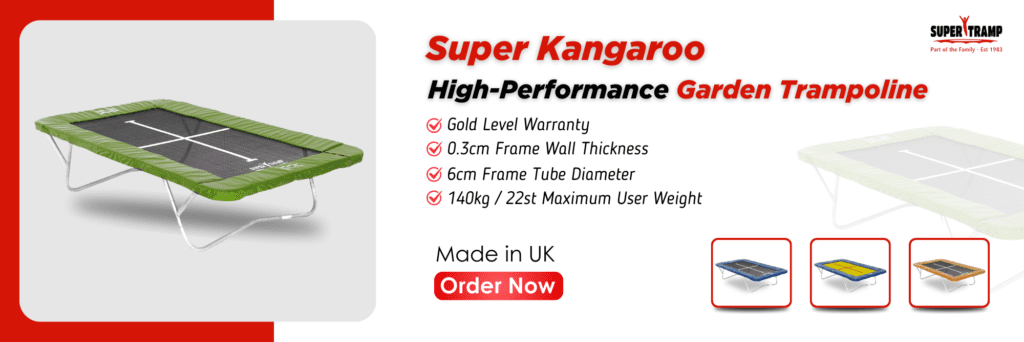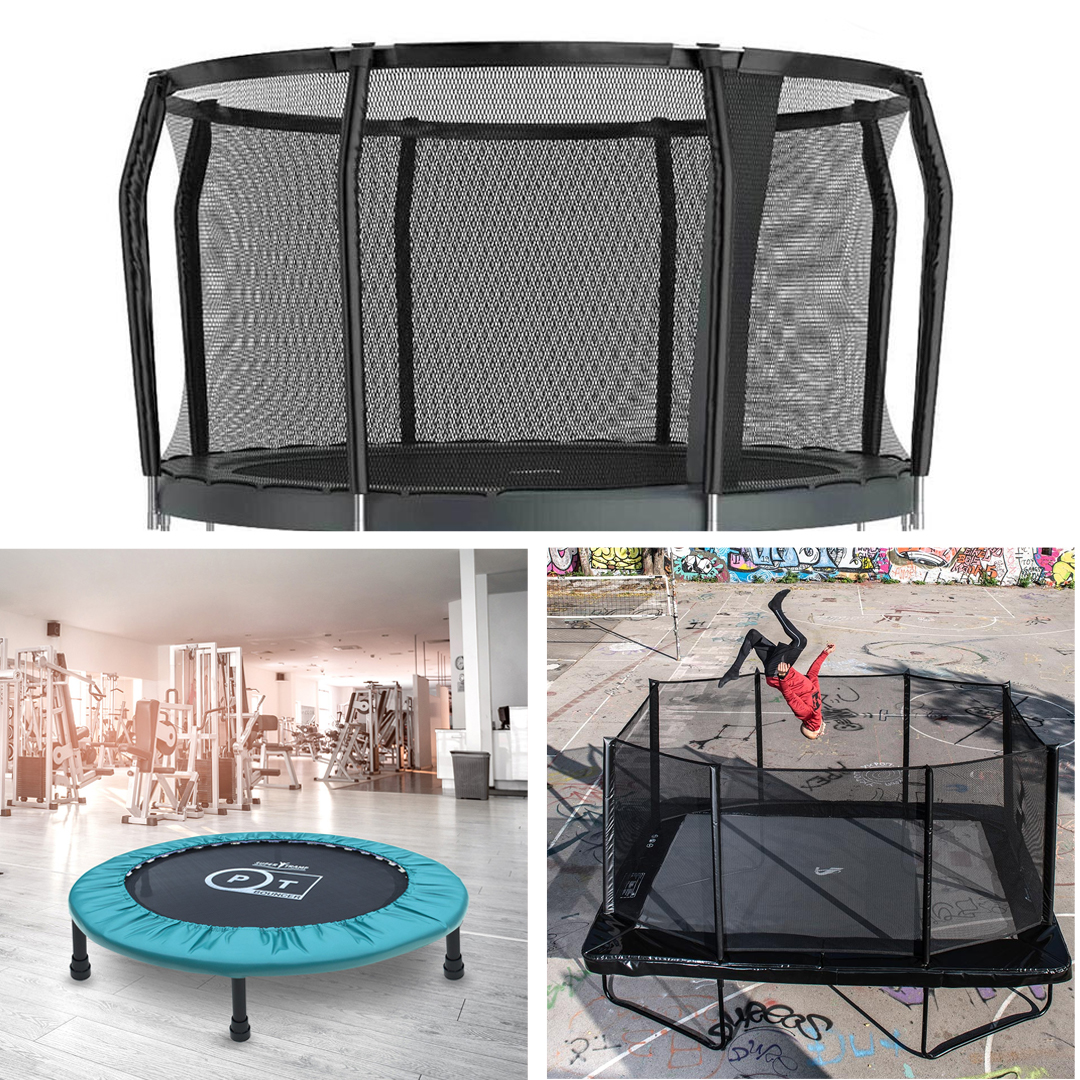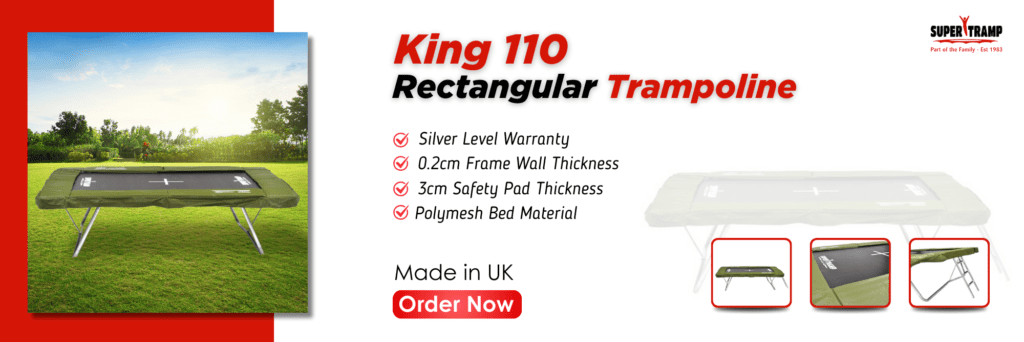
Table of Contents
ToggleIn a world where we’re constantly chasing success—building careers, earning money, and striving to fit into society’s mould—one crucial aspect often slips through the cracks: our physical health. It’s easy to get caught up in life’s hustle, overlooking that physical skills are just as vital as any other achievement. Whether you’re a parent pushing your child towards academic excellence or an adult juggling work and personal commitments, there’s one thing you can’t afford to ignore: the importance of physical skills in every stage of life.
From performing everyday tasks to keeping our brains sharp, physical skills like balance, coordination, and strength play an integral role in our overall well-being. Many of us forget that true happiness comes from within—when you’re fit enough to carry out your physical duties without strain, when you can stay active without assistance, and when your mind functions at its best. That’s the kind of fulfilment no material wealth can replace.
Here’s where the trampoline comes in. Not only is it a fun activity for all age groups, but it’s also a highly effective tool for developing a wide range of physical skills.
improving coordination, building strength, or enhancing balance, trampolining offers a full-body workout disguised as play. And the best part? It doesn’t feel like exercise!
So, no more neglecting the fundamentals. In this guide, we’ll dive into the importance of physical skills, how trampolining can help you develop them, and why it’s time to take your physical health as seriously as any other life goal. Ready to bounce your way to better physical skills? Let’s jump right in!
Why Physical Skills Are Important
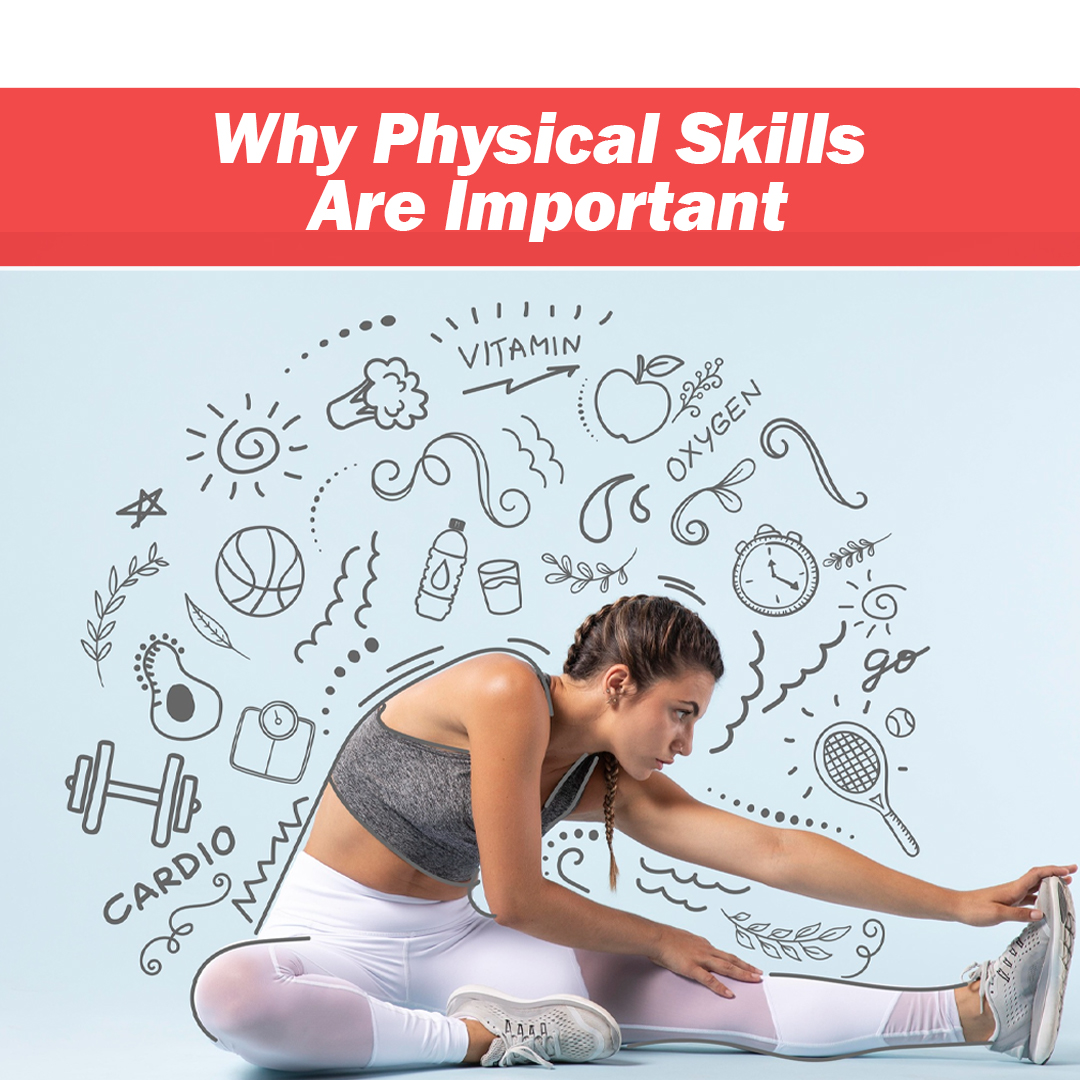
Physical skills are the building blocks of movement and coordination, essential for everything we do in life. At the core, five key physical skills shape our ability to function and grow:
- Balance: The ability to maintain your body’s centre of gravity, whether you’re standing still or in motion. Imagine walking on a narrow beam—without balance, it’s impossible to stay upright.
- Coordination: This refers to the smooth and efficient movement of different body parts together. Whether you’re catching a ball or typing on a keyboard, coordination helps you perform tasks fluidly.
- Agility: The ability to move quickly and easily, whether dodging obstacles or shifting directions during exercise. It’s what helps athletes, and even children on garden trampolines, move with speed and grace.
- Strength: Building muscle power to carry out daily tasks with ease, from lifting groceries to climbing stairs. Strength forms the foundation for all physical activity.
- Flexibility: Flexibility allows your muscles and joints to move through a full range of motion. Whether you’re bending down to tie your shoes or stretching after a workout, flexibility keeps your body limber and injury-free.
These basic skills are not just important for athletes—they are vital for everyone. Without them, even simple tasks can become challenging, affecting your quality of life and overall health.
Physical Skill Development at Different Age Groups
As we journey through life, our physical skill development evolves, requiring different approaches at various stages. Let’s explore how these skills change from infancy to senior years and how trampolining supports this growth at every phase.

Toddlers
- In the early years of life, motor skills are the focus.
- Crawling, walking, and eventually running all depend on balance and basic coordination.
- Have you ever watched a toddler take their first wobbly steps? That’s their body learning to balance itself.
- Introducing activities like jumping on a mini Playground Trampolines helps toddlers further develop these essential skills, making movement smoother and more controlled.
Children and Teenagers
- As children grow, their physical skills expand to include strength, agility, and more refined coordination.
- They start climbing, running, and playing sports.
- Trampolines provide an ideal platform for children and teens to build strength and improve agility while having fun.
- The trampoline’s surface forces the body to engage muscles for balance and power with every jump, helping children stay active and healthy while they develop.
Adults
- For adults, maintaining flexibility, balance, and cardiovascular health becomes key.
- Daily life often leaves little room for dedicated exercise, but jumping on a performance trampoline offers a low-impact, high-reward workout that keeps these physical skills in check.
- Adults benefit from keeping muscles strong and joints flexible to prevent injuries and enhance day-to-day activities.
- Trampolining, even just for 15 minutes a day, can improve heart health, core strength, and overall endurance.
Seniors
- As we age, mobility, balance, and strength become even more crucial to prevent falls and maintain independence.
- For seniors, simple exercises on a trampoline can help improve stability and confidence.
- By strengthening their muscles and improving balance through low-impact bouncing, seniors can maintain their mobility and reduce the risk of injuries.
From early childhood to late adulthood, physical skills shape how we move, live, and interact with the world. Developing and maintaining these skills at every age ensures a healthier, more active lifestyle.
With a clear understanding of why physical skills matter, let’s dive into how trampolines can play a pivotal role in enhancing these abilities.
How Trampolines Help in Development
Trampolines offer much more than just a fun way to bounce around—they are powerful tools for physical development. When you jump on a 10 x 6ft Primus Flat Rectangular Trampoline, your body engages multiple muscle groups, from your legs to your core, helping to strengthen muscles and improve overall balance.
The repetitive bouncing motion forces your body to constantly adjust and stabilise itself, sharpening your motor coordination and control.
What’s more, trampolining is a form of low-impact cardiovascular exercise.
Unlike running or jumping on hard surfaces, trampolines reduce the stress on your joints while still giving your heart a great workout. This makes it perfect for people of all fitness levels, as it’s gentle on the body but effective in boosting stamina and endurance. Next, let’s explore some different types of trampoline:
Different Types of Trampolines
To get the most out of trampolining, choosing the right trampoline is essential. Here’s a breakdown of the different types available:
- Round Trampolines: These are the most common and family-friendly option, perfect for recreational use. They provide a great bounce with soft edges, making them ideal for all age groups. Think of them as the perfect backyard trampoline where everyone can join in.
- Rectangle Trampolines: Favoured by athletes and gymnasts, rectangle trampolines offer a stronger, more controlled bounce. Their shape allows for higher jumps and better precision, making them ideal for those looking to take their trampoline skills to the next level.
- Mini Trampolines (Rebounders): These compact PT Bouncer™ Professional 40″ Fitness Rebounder are perfect for indoor fitness routines. Known for rebounding, they are designed for low-impact cardio workouts that boost heart health and improve muscle tone. Whether you’re doing a quick bounce session in your living room or a structured workout, mini trampolines are versatile and convenient.
Once you’ve chosen the right trampoline, it’s time to put it to use with exercises that maximise its benefits. Each type of trampoline offers unique opportunities for different workouts, helping you target specific physical goals, from building strength to improving balance. Let’s dive into the best exercises for each trampoline type and how they can enhance your fitness routine.
Lorem ipsum dolor sit amet, consectetur adipiscing elit. Ut elit tellus, luctus nec ullamcorper mattis, pulvinar dapibus leo.
- Twist Jumps: Rotate your body mid-air while jumping, improving your agility and coordination.
- Advanced Acrobatics: These trampolines are designed for high-level flips, spins, and jumps, making them ideal for athletes or those aiming to develop advanced skills.
Best Exercises to Lose Weight
If your goal is to shed a few pounds, trampolining offers a fun, high-energy way to burn calories:
- High-Intensity Interval Bouncing: Alternate between fast and slow bounces to raise your heart rate and keep your muscles working.
- Trampoline Burpees: Jump, squat, and push up in a continuous sequence to work every major muscle group.
- Jumping Jacks: Perform traditional jumping jacks on the trampoline to add extra bounce and intensity to your routine.
Best Exercises for Beginners
If you’re just starting, it’s important to build confidence and strength with simple yet effective moves:
- Simple Bounce Drills: Start with gentle, repetitive bouncing to build balance and coordination.
- Star Jumps: Spread your arms and legs wide as you jump to improve coordination.
- Balance Holds: After bouncing, land and hold a still position to train your stability and control.
Best Exercises for Seniors
For seniors, trampolining offers a low-impact way to improve joint health and mobility while reducing the risk of injury:
- Gentle Bouncing: A slow, controlled bounce can stimulate blood circulation and help with balance.
- Knee Lifts: While bouncing lightly, raise your knees alternately to build strength and flexibility in the lower body.
- Balance Exercises: Focus on gentle movements that improve stability and prevent falls, such as alternating leg lifts or standing still on the trampoline.
Trampolines cater to all fitness levels and ages, making them an incredibly versatile tool for developing physical skills. Whether you’re working on building strength, losing weight, or simply improving your balance, there’s a trampoline exercise to suit your needs.
While 14ft Primus Flat Trampoline offer fantastic physical benefits, ensuring their security is just as important to prevent accidents and maximise safety.
How to Make Trampolines Secure
Ensuring your trampoline is secure is essential for both safety and longevity. By taking a few precautionary steps, you can protect users from injury while keeping your trampoline in top shape for years to come.
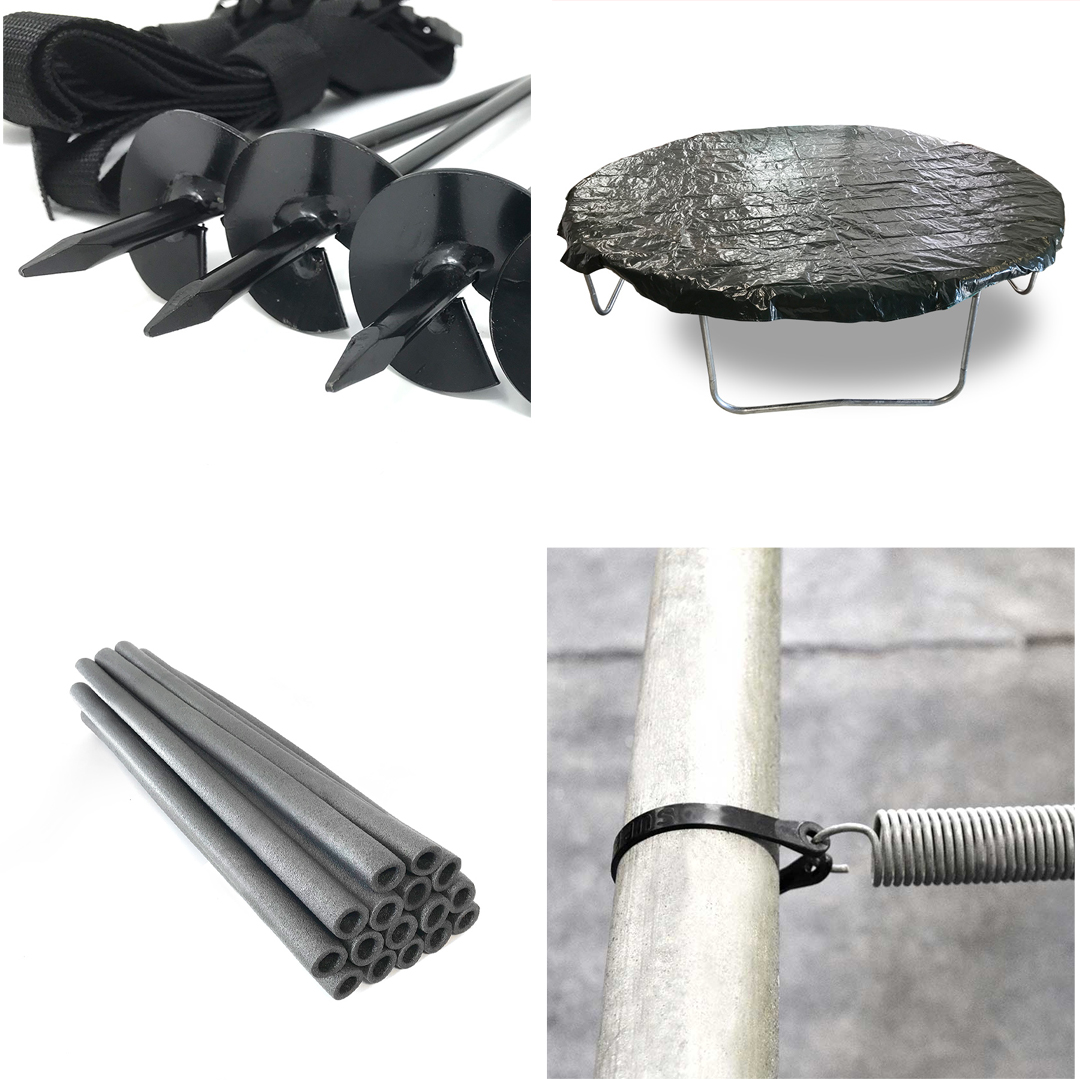
Tie Down Anchor Kit
Securing your trampoline with a tie-down anchor kit is crucial, especially during strong winds or when the trampoline is in heavy use. These kits work by anchoring the trampoline into the ground, ensuring it stays firmly in place and doesn’t tip over or move. Without this precaution, you risk having your trampoline blow away or cause damage, especially in stormy weather. This is a simple yet effective way to guarantee safety and longevity for your trampoline.
Weather Cover
Your trampoline is exposed to the elements all year round. A weather cover protects it from rain, sun, and even snow, preventing damage to the springs, mat, and padding. Prolonged exposure to the sun can weaken the fabric, while rain can cause rust on the springs and frame. By investing in a quality weather cover, you ensure that your trampoline stays in top condition and lasts longer. Plus, it saves you the hassle of constant repairs or replacements!
Pole Cover
The metal frame and poles of a trampoline can be dangerous, especially during high-energy bouncing sessions. Pole covers are soft, cushioned pads that wrap around the poles, reducing the risk of injury from accidental impact. Whether kids are playing or you’re trying advanced tricks, the pole covers act as an extra layer of protection, making the entire trampoline safer to use.
Regular Maintenance
A trampoline is like any other piece of equipment—regular maintenance is key to ensuring it works properly and remains safe. Frequently check the springs, nets, and padding for any signs of wear and tear. Replace rusty springs, tighten loose screws, and make sure the safety net is intact. A well-maintained trampoline not only lasts longer but also provides a safer environment for all users. It’s like giving your trampoline a tune-up to keep it bouncing smoothly!
By taking these safety measures, you’re not just extending the lifespan of your trampoline but also protecting everyone who uses it.
Final Words
Trampolining is more than just a fun pastime—it’s a powerful tool for developing essential physical skills. Whether you’re looking to improve balance, strength, and coordination, or simply boost your overall health, a trampoline offers an exciting and effective way to get moving.
Now is the time to take action! With so many trampoline options available—from round models perfect for families to rectangle trampolines for those looking to take their fitness to the next level—you can easily find the right fit for your goals. Investing in a trampoline isn’t just an investment in fun; it’s an investment in your physical health and personal growth.
So, what’s holding you back? Jump into your fitness journey, and don’t forget to share your experiences with us. Have a favourite exercise or a story of how trampolining has transformed your physical skills? We’d love to hear it!
Trampolining improves cardiovascular health, balance, coordination, and strengthens muscles while being gentle on the joints.
Trampolines enhance core strength, agility, motor skills, and coordination, making it an excellent tool for full-body physical development across all ages.
Balance, coordination, strength, and cardiovascular endurance are key components of fitness in trampolining.
You can perform exercises like bounce squats, tuck jumps, and high-intensity interval bouncing to improve strength, balance, and cardio health.
Trampoline exercise is highly effective, offering a full-body workout that boosts cardiovascular health, tones muscles, and improves coordination while being low-impact.
DON'T MISS...
- 5 Callisthenics Exercises on Trampoline to Achieve Jacked Body
- Jumping Jacks Exercises on Trampoline to Burn 30,000 Calories in 30 days
- Why Resistance Band Good for Full-body Strength Workout?
- 7 Questions You All Should Ask Before Getting a Trampoline
- Which Material is Best for Your Trampoline Frame Pads?


